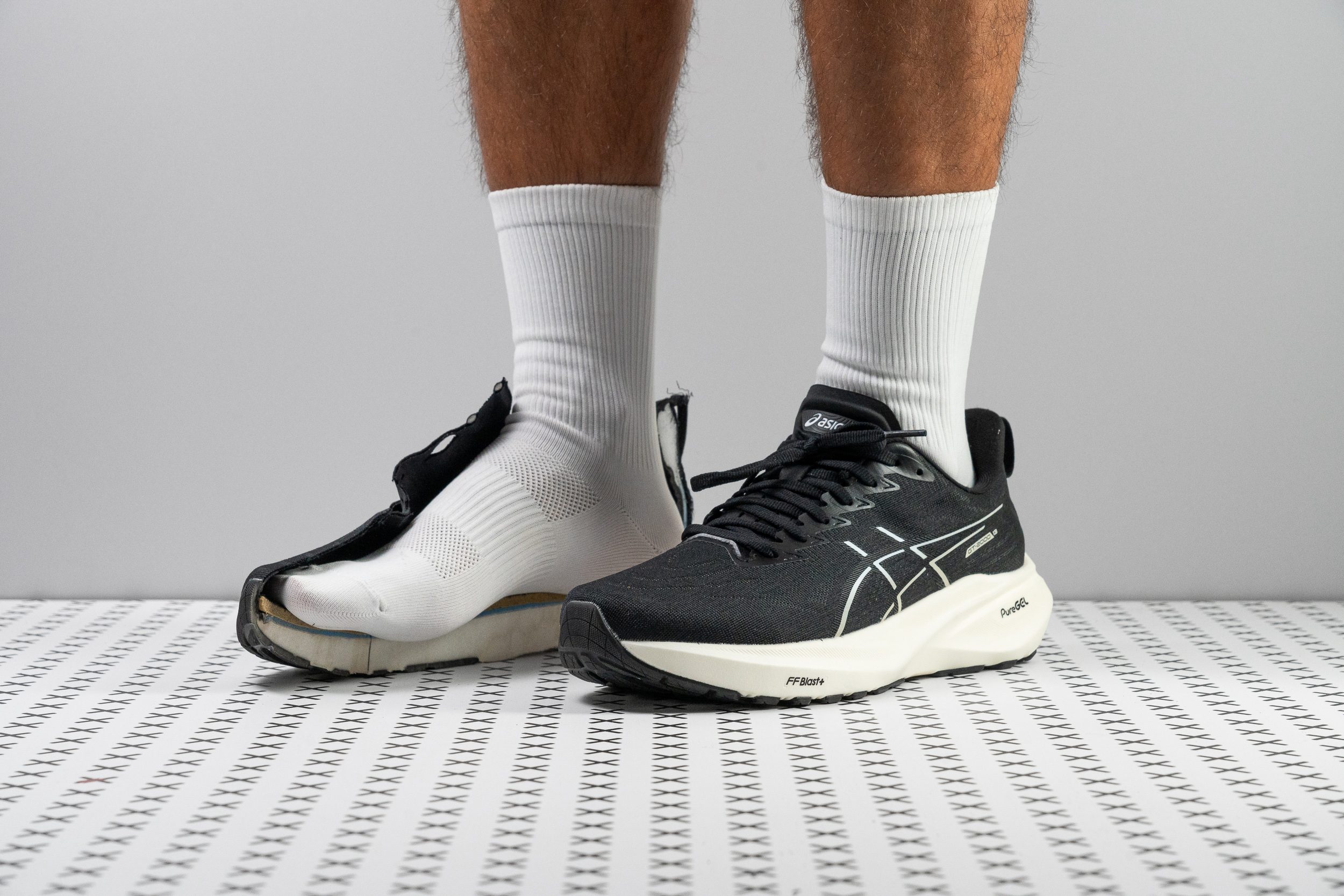Nuestra conclusión
Pros
- Muy duraderas
- Fiables
- Más ligeras que la v12
- Ideales para talonadores
- Muy estables
- También sirven para caminar
- Muy cómodas
- Mediasuela FF Blast+ más blanda
- Plantilla Ortholite mullida
- Tracción mejorada
Contras
- No son para carreras rápidas
- A la lengüeta le falta acolchado
- El upper no tiene mucho espacio vertical
Veredicto de los usuarios
- Top 27% entre Zapatillas de running para asfalto
- Top 19% entre zapatillas de running de estabilidad
- Top 16% más vendidas zapatillas de running
Comparativa
Las zapatillas de running más parecidas
+ + Añadir unas zapatillas | |||||
|---|---|---|---|---|---|
| Puntuación global | 89 Notables | 85 Buenas | 80 Buenas | 82 Buenas | |
| Precio | 160 € | 160 € | 130 € | 160 € | |
| Pace | Correr a diario | Correr a diario | Correr a diario | Correr a diario | |
| Absorción de impactos | Moderada | Moderada | Alta | Alta | |
| Retorno de energía | Bajo | Moderado | Moderado | Moderado | |
| Tracción | Alta | Alta | Alta | Alta | |
| Arch support | Estabilidad | Estabilidad | Estabilidad | Estabilidad | |
| Peso laboratorio Peso marca | 9.3 oz / 264g 9.4 oz / 266g | 10.4 oz / 295g 10.5 oz / 298g | 8.1 oz / 231g 8 oz / 228g | 9.5 oz / 269g 9.4 oz / 266g | |
| Lightweight | ✗ | ✗ | ✓ | ✗ | |
| Drop laboratorio Drop marca | 9.4 mm 8.0 mm | 9.3 mm 8.0 mm | 9.4 mm 5.0 mm | 8.7 mm 8.0 mm | |
| Técnica de carrera | TalónMedio/antepié | TalónMedio/antepié | TalónMedio/antepié | TalónMedio/antepié | |
| Talla | Tallan bien | Tallan un poquito pequeño | Tallan un poquito pequeño | Tallan bien | |
| Rigidez de la mediasuela | Blanda | Blanda | Blanda | Blanda | |
| Diferencia de la rigidez de la mediasuela en frío | Pequeña | Grande | Grande | Normal | |
| Durabilidad de la parte delantera | Buena | Decente | Mala | Decente | |
| Durabilidad del acolchado del talón | Alta | Baja | Media | Alta | |
| Durabilidad de la suela exterior | Buena | Decente | Mala | Buena | |
| Transpirabilidad | Media | Media | Alta | Baja | |
| Anchura / ajuste | Media | Media | Estrecha | Media | |
| Anchura de la parte delantera | Media | Media | Estrecha | Estrecha | |
| Flexibilidad | Moderada | Moderada | Moderada | Moderada | |
| Rigidez torsional | Rígidas | Moderadas | Rígidas | Rígidas | |
| Rigidez del contrafuerte del talón | Rígido | Rígido | Rígido | Rígido | |
| Rocker | ✗ | ✗ | ✓ | ✗ | |
| Talón laboratorio Talón marca | 36.6 mm 36.0 mm | 36.8 mm 38.0 mm | 36.0 mm 33.0 mm | 36.9 mm 36.5 mm | |
| Antepié laboratorio Antepié marca | 27.2 mm 28.0 mm | 27.5 mm 30.0 mm | 26.6 mm 28.0 mm | 28.2 mm 28.5 mm | |
| Anchuras disponibles | EstándarAnchoExtra Ancho | EstrechoEstándarAnchoExtra Ancho | EstándarAncho | EstándarAnchoExtra Ancho | |
| Orthotic friendly | ✓ | ✓ | ✓ | ✓ | |
| Estación | Todas las estaciones | Todas las estaciones | VeranoTodas las estaciones | Todas las estaciones | |
| Removable insole | ✓ | ✓ | ✓ | ✓ | |
| Clasificación | #162 Top 25% | #214 42% inferior | #309 17% inferior | #281 25% inferior | |
| Popularidad | #104 Top 16% | #32 Top 9% | #87 Top 24% | #66 Top 18% |
Quién debería comprárselas
Les hemos hecho pruebas a las ASICS GT 2000 13 hasta decir basta, y creemos que son unas zapatillas magníficas para el día a día de:
- Los que tiene problemas moderados de estabilidad y están buscando una sujeción sutil para alinear su pisada sin sentirse limitados.
- Los seguidores más fieles de la serie GT 2000 que se compran todas las versiones. Esta les resultará familiar, pero viene con sus Los corredores que necesiten unas zapatillas con amortiguación, duraderas y estables para el día a día, diseñadas para durar y con un precio muy inferior al de las Gel Kayano 31.
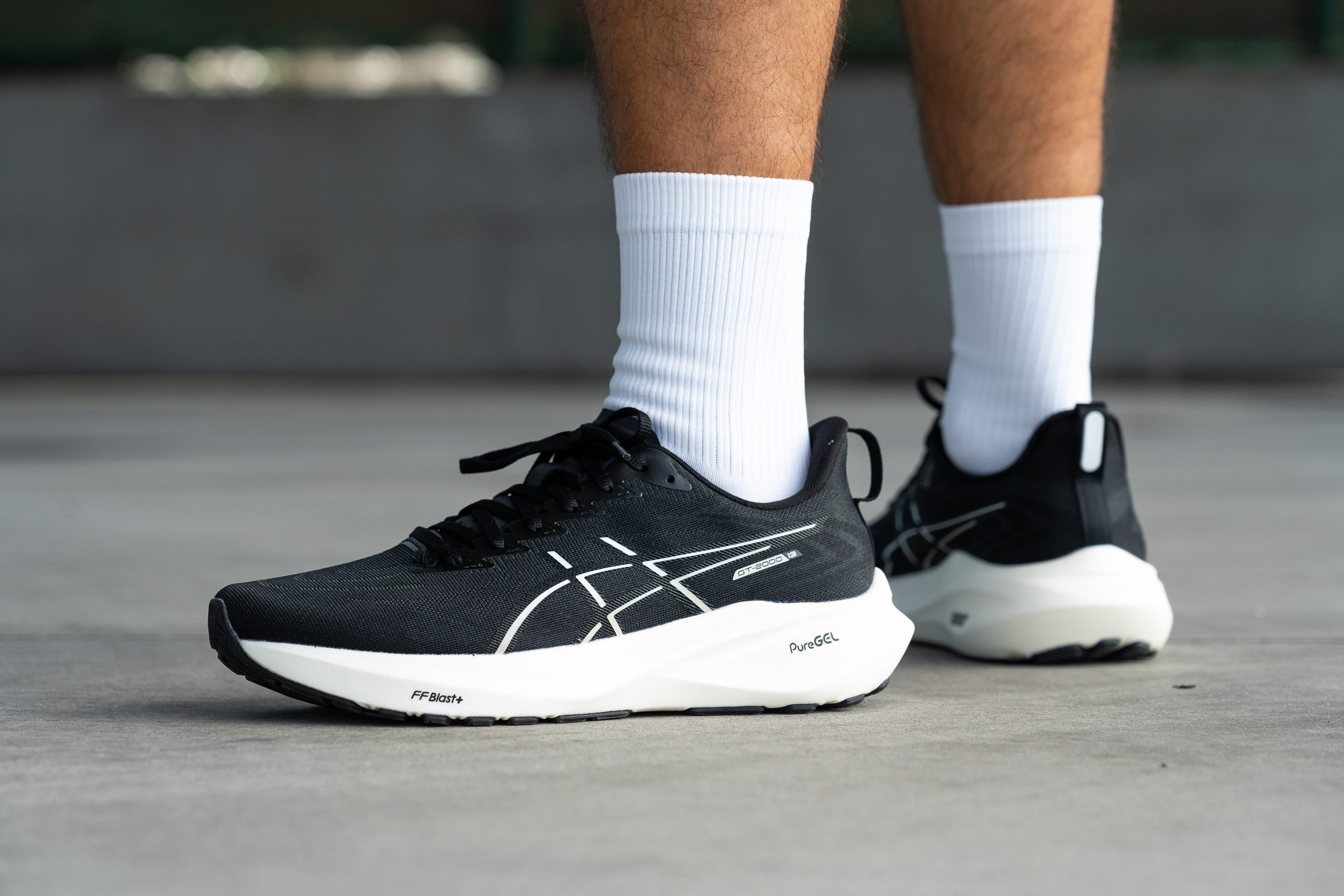
Quién NO debería comprárselas
Después de meterle mucha caña a las GT 2000 13, hemos descubierto que pueden no ser la mejor opción para los corredores de metatarsos, ya que tienen un drop alto y cuentan con la tecnología PureGEL en el talón. Desde nuestro punto de vista, las Hoka Arahi 7 y las Altra Paradigm 7 ofrecen una estabilidad suave más adaptada a este tipo de corredores.
Además, creemos que a las GT 2000 13 les falta la diversión que buscan algunos corredores. Si para ti eso es importante, échale un ojo a las ASICS Novablast 4 o a las New Balance FuelCell Rebel v4; ambas son ahora más estables que nunca, así como más adecuadas para los que buscan una mezcla e diversión y funcionalidad.

Amortiguación
Shock absorption
Las GT 2000 13 siguen el ritmo de sus predecesoras en cuanto a la absorción de impactos, obteniendo resultados parecidos: 119 SA en el talón y 110 SA en el antepié. Estas cifras estándar coinciden perfectamente con el propósito de este par.
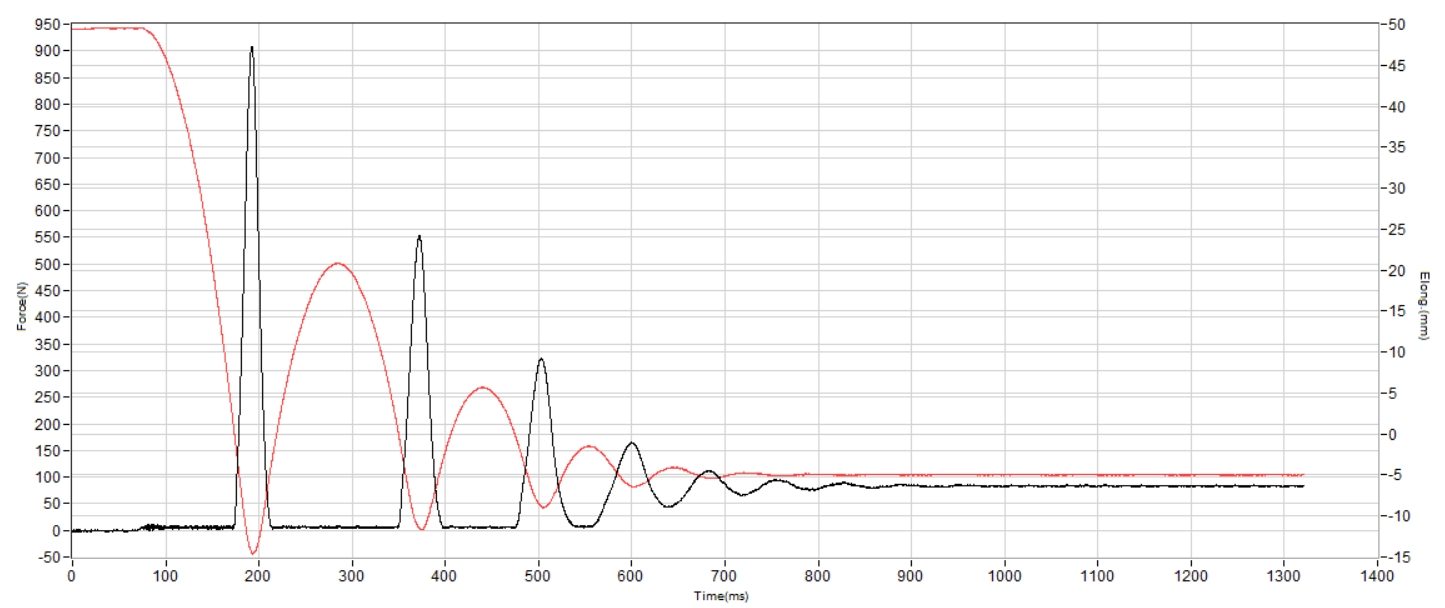
| GT 2000 13 | 119 SA |
| Media | 129 SA |
Energy return
También vimos que el retorno de energía mejora un poco, subiendo del 47,9 % en el modelo 12 al 50,6 % en esta décimo tercera versión. Sin embargo, todavía está muy por debajo de lo que esperaríamos de unas zapatillas dentro del rango de precios de las GT 2000 13.
| GT 2000 13 | 50.6% |
| Media | 58.5% |
Altura de la suela en la zona del talón
Y no, ASICS no redujo el grosor de estas zapatillas para hacerlas más ligeras. Mantuvo la misma altura de la suela en el talón (36,6 mm), proporcionándoles una buena amortiguación a la mayoría de corredores.
Al igual que sus predecesoras, las GT 2000 13 también tienen la tecnología PureGEL en el talón, que es muy ventajosa para las personas con un peso más alto y, además, mejora la comodidad al caminar.
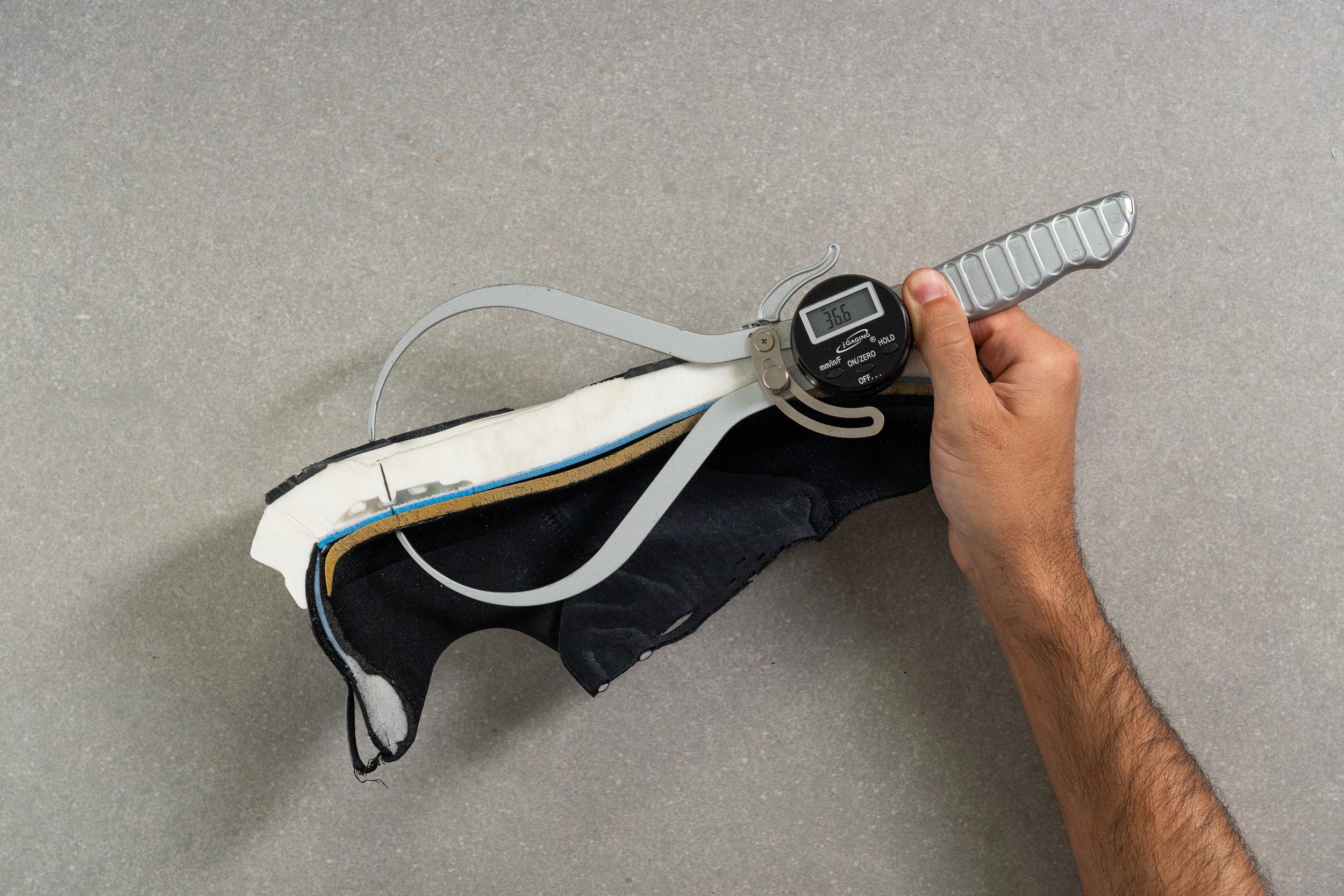
| GT 2000 13 | 36.6 mm |
| Media | 34.8 mm |
Altura de la suela en el antepié
Con 27,2 mm, la parte delantera de estas zapatillas se adapta a los corredores de mediopié y de metatarsos incluso en los entrenamientos de larga distancia. De hecho, creemos que este modelo es ideal para cualquiera que esté buscando una mayor estabilidad para sus carreras fáciles de media a larga distancia, sobre todo en los entrenamientos para un maratón.

| GT 2000 13 | 27.2 mm |
| Media | 26.2 mm |
Drop
La diferencia entre ambas medidas nos deja con un drop de 9,4 mm, que está dentro del popular rango de 8 a 10 mm típico de la mayoría de las zapatillas de entrenamiento diario. Este diseño le va bien a cualquier tipo de pisada, aunque creemos que les funciona mejor a los talonadores.
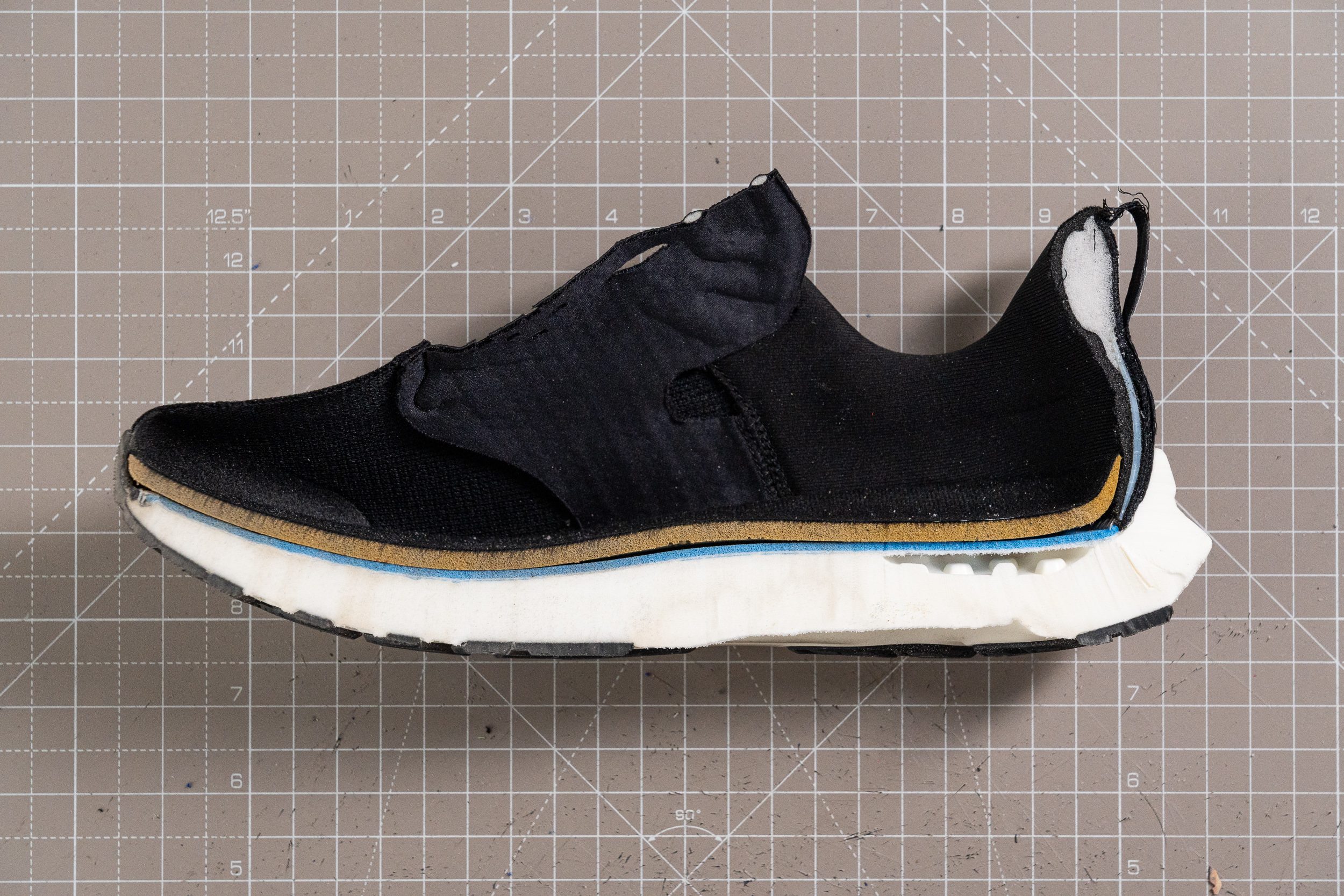
| GT 2000 13 | 9.4 mm |
| Media | 8.6 mm |
Suavidad de la mediasuela
ASICS sigue utilizando la mediasuela FF Blast+ que hemos visto en muchos de sus modelos de nivel medio, como las Noosa Tri 16. Esta vez, sin embargo, es más blanda (18,5 HA) en comparación con la de las GT 2000 12 (24,5 HA).
Aunque no es un cambio drástico, era un ajuste necesario. Creemos que, aunque la estabilidad sigue siendo una prioridad para estas zapatillas, el espacioso diseño de las GT 2000 deja que la pisada sea más mullida, y ASICS lo ha conseguido.
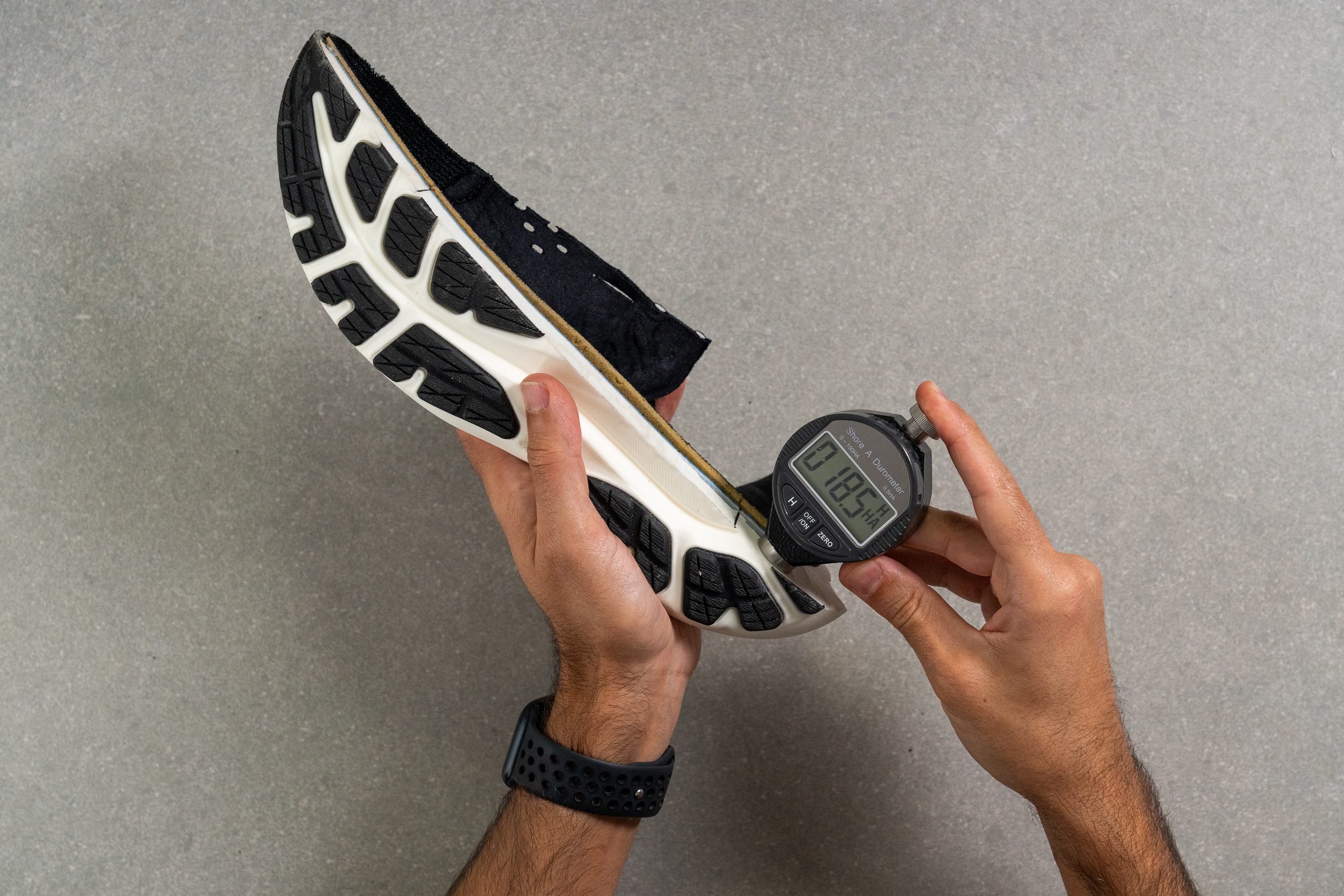
| GT 2000 13 | 18.5 HA |
| Media | 20.4 HA |
Rocker
Los que estén buscando una pisada clásica estarán encantados con las GT 2000, ya que ASICS ha mantenido un perfil sin rocker con solo una pequeña inclinación en la parte delantera, nada más.
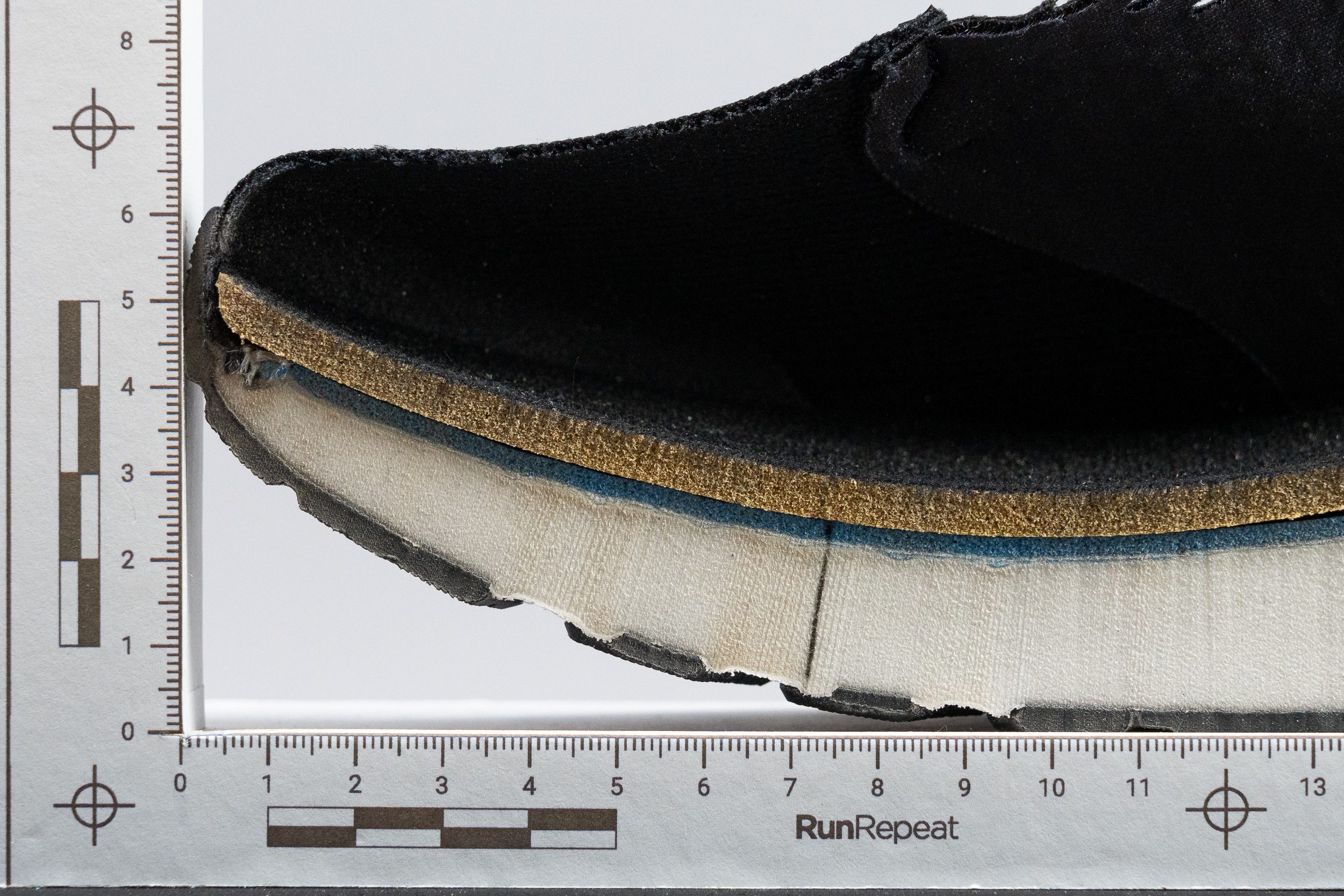
Si quieres unas zapatillas con un rocker más pronunciado, no te preocupes, ya que hay un montón de alternativas, como las ASICS Superblast 2. Sin embargo, teniendo en cuenta la flexibilidad longitudinal y la altura moderada de la suela de las GT 2000, creemos que su diseño es óptimo.
PureGEL
La PureGEL se ha convertido en una característica común entre los modelos de entrenamiento diario de élite de ASICS, como las Nimbus 26. Esta tecnología mejora la GEL anterior, proporcionándoles una mayor comodidad a los talonadores sin el elevado peso de los materiales anteriores.
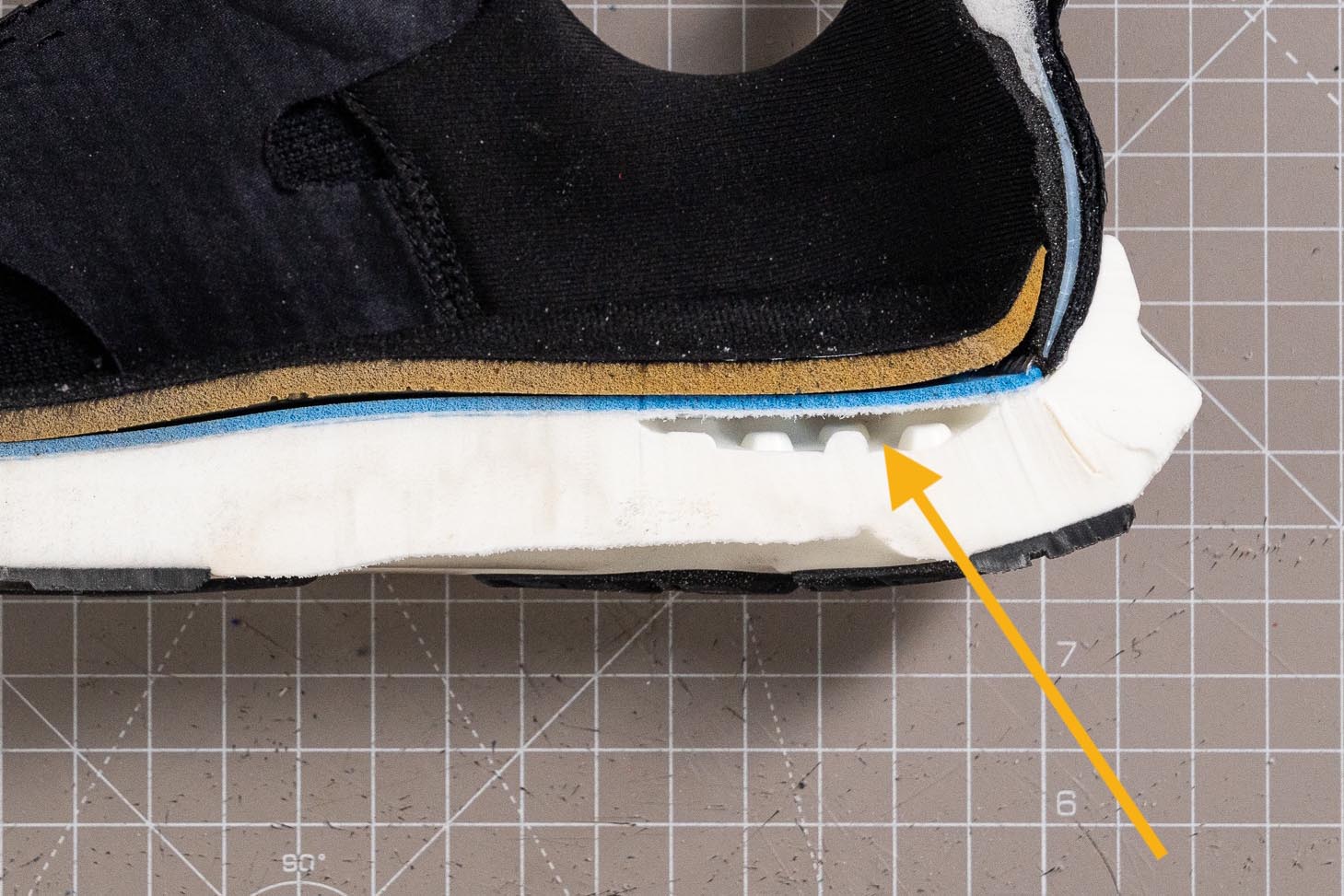
Está situada justo debajo de la plantilla y encima de la mediasuela, como puedes ver en la imagen de arriba, aumentando eficazmente la comodidad para los talonadores. Pero, sinceramente, la mayoría de corredores podrían no enterarse de que está ahí si no la destacásemos o si no se mencionase en la mediasuela.
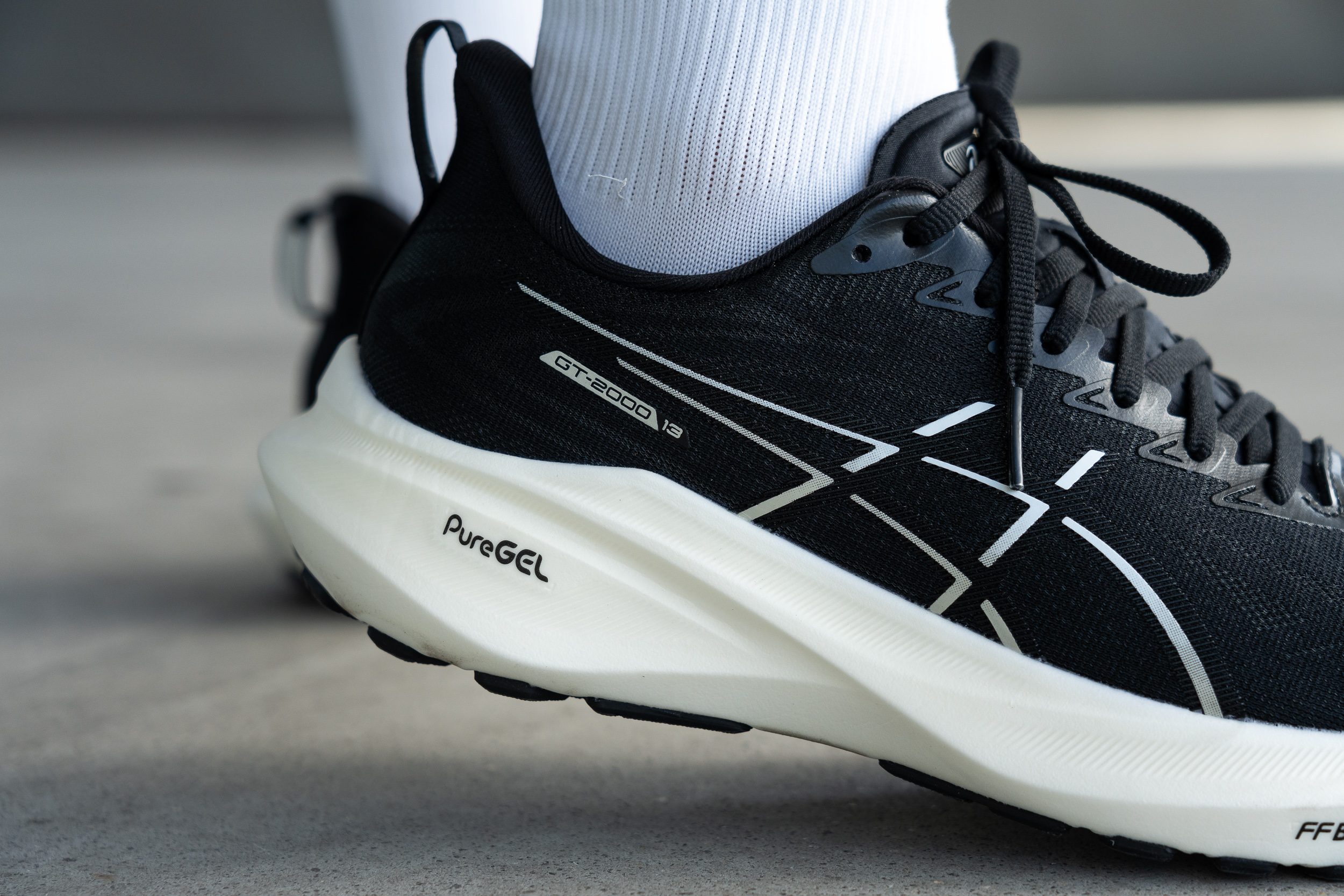
Tallaje y ajuste
Con respecto a la suela exterior, podemos decir que la marca japonesa decidió seguir una estrategia prudente, retocando un poco el diseño de la V12 al añadir más caucho en las zonas más propensas al desgaste.
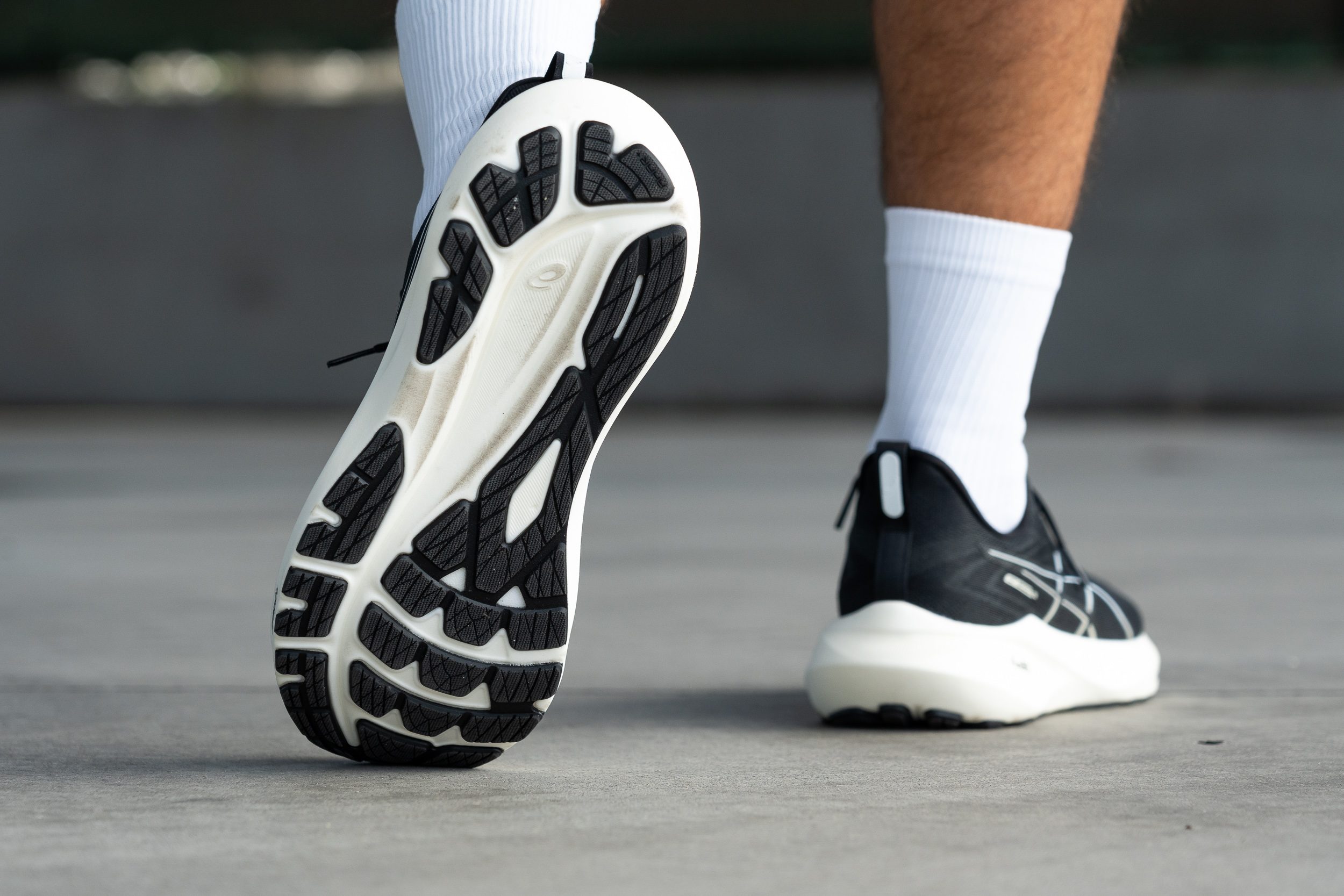
Nuestro durómetro marcó 82,1 HC, un resultado cercano a la media. La verdad, es lo que nos esperábamos de unas zapatillas diseñadas siguiendo un enfoque sin riesgos, y además esto sugiere que serán bastante duraderas. De todos modos, seguimos pensando que ASICS podría haber utilizado ASICSGRIP, que es su mejor suela exterior, aunque el caucho AHAR+ que utiliza tiene un rendimiento lo suficientemente bueno.
Talla
Las ASICS GT 2000 13 tallan bien (102 votos).
Anchura / Ajuste
Les metimos un gel especial dentro a las GT 2000 13, creando un molde que imitaba a la perfección su espacio interno. Una vez estaba solidificado, empezamos a medirlo.
En la zona más ancha, nuestro calibre marcó unos equilibrados 96,0 mm de ancho, lo que nos parece un ajuste equilibrado. La mayoría de los corredores no deberían tener problema, ya que los modelos de la serie GT están diseñados para adaptarse a un público amplio.

| GT 2000 13 | 96.0 mm |
| Media | 95.1 mm |
Anchura de la parte delantera
En la zona del dedo gordo, nuestro calibre marcó una anchura de 73,3 mm. Esto refleja perfectamente nuestra experiencia al correr con estas zapatillas, ya que no son ni espaciosas ni estrechas, sino cómodamente estándar.
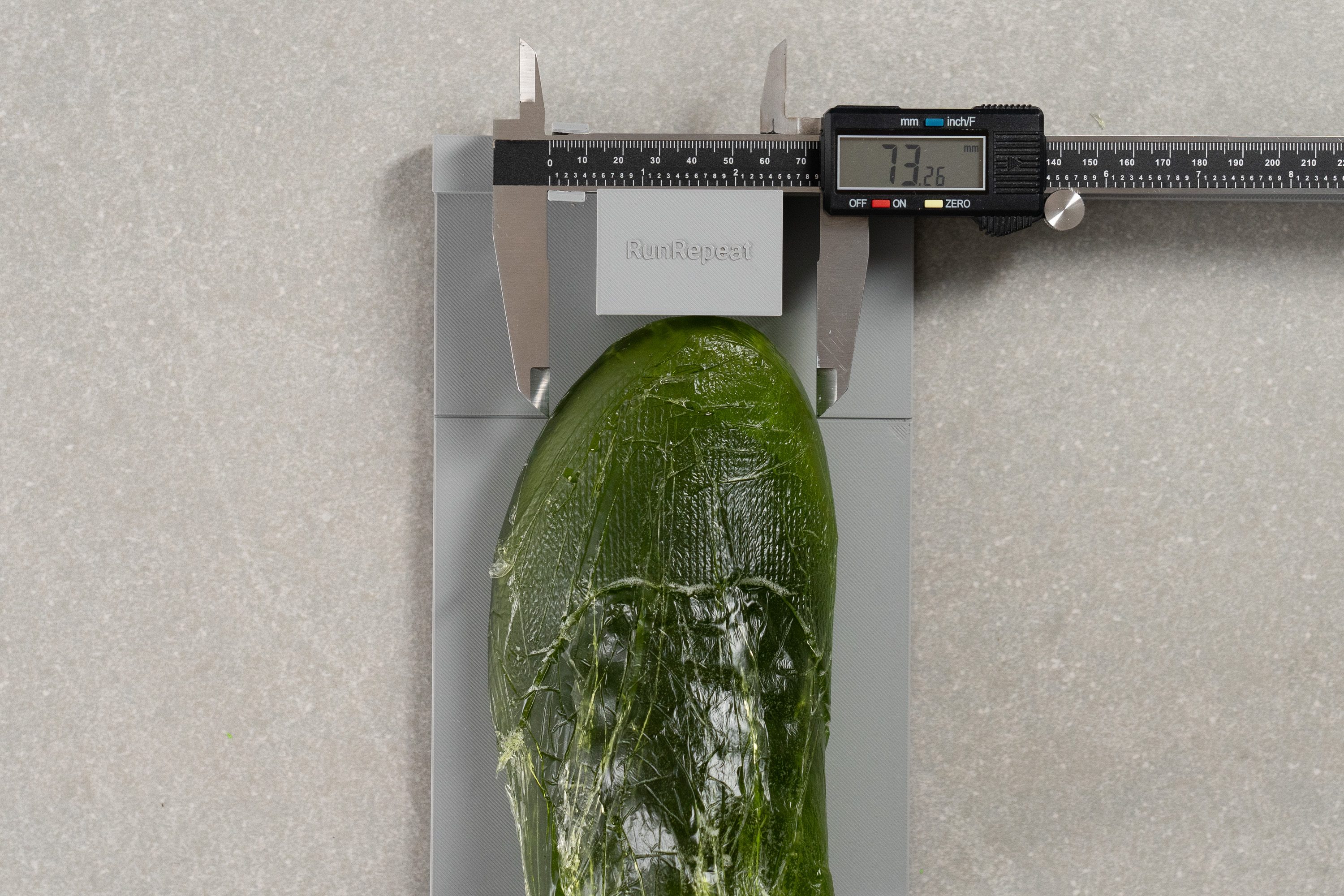
| GT 2000 13 | 73.3 mm |
| Media | 73.2 mm |
Altura de la parte delantera
Hemos sentido que, en comparación con el modelo del año pasado, el volumen vertical de este es inferior. De todos modos, en nuestra opinión, esto no debería ser un problema para la mayoría de los corredores, ya que el upper de estas GT da un poco de sí.
Para que el upper se estire un poco, los corredores suelen utilizar el mítico truco de rellenarlo con bolitas de papel de periódico antes y después de correr; es un método sencillo pero eficaz, la verdad. Eso sí, si las partes superiores con un bajo volumen vertical no te gustan, te sugerimos o que le eches un ojo a las tallas anchas o que vayas a por un modelo distinto.
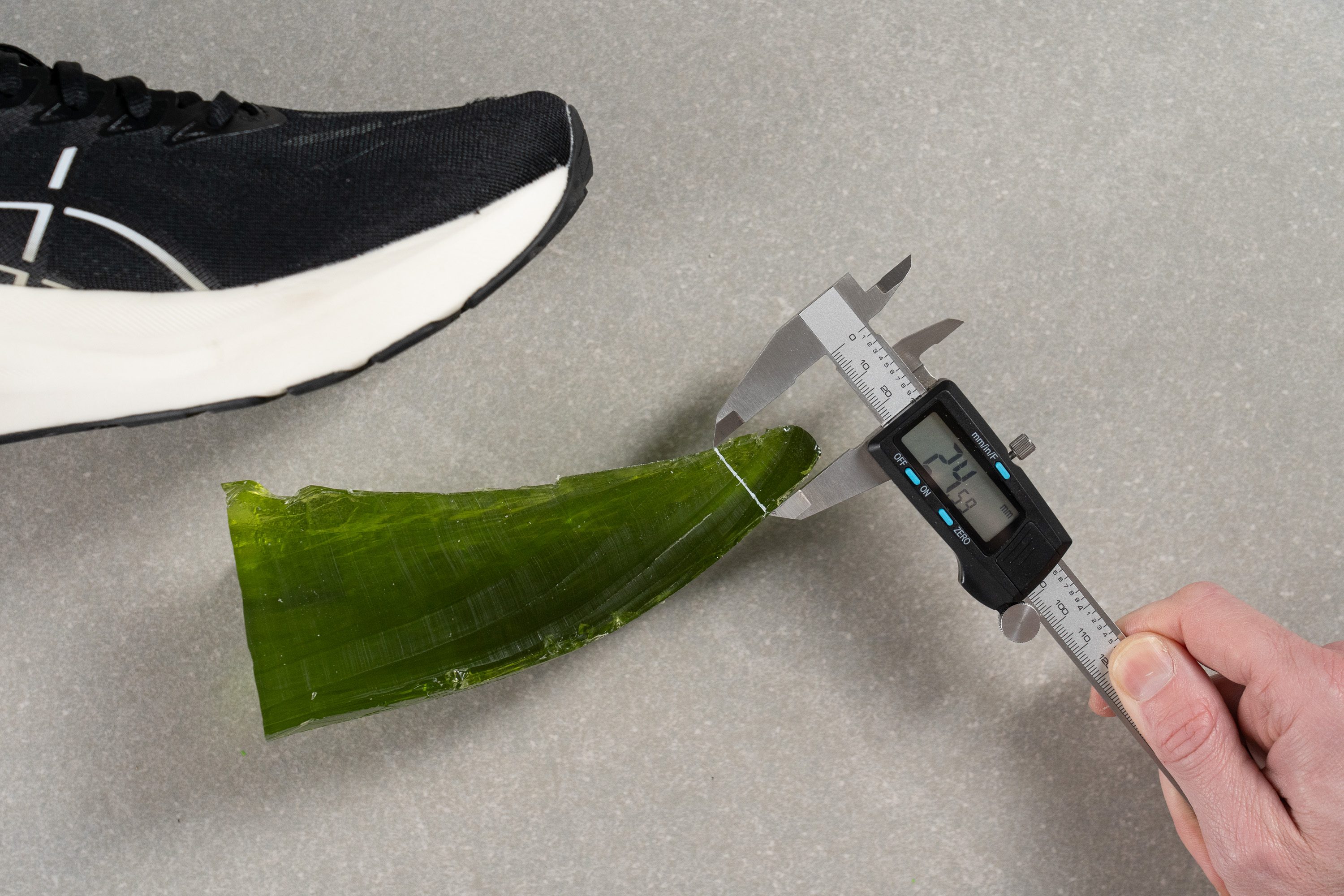
| GT 2000 13 | 24.6 mm |
| Media | 27.1 mm |
Tracción / Agarre
Traction test
Está claro que esta suela exterior está hecha para durar, pero..., ¿y su agarre? Al fin y al cabo, esto es lo que más importa bajo los pies. Pues mira, no te vamos a mentir, porque sí que nos preocupaba un poquito que ASICS utilizase el caucho AHAR+ en lugar de su compuesto ASICSGRIP de primera calidad.
Las evaluamos sobre suelo mojado utilizando nuestra configuración estándar y terminamos con una puntuación de 0,47. Aunque no es mala (está más o menos en la media) y ofrece un buen agarre tanto sobre seco como sobre mojado, no consigue igualar el nivel de tracción que otros modelos de ASICS más caros. Puede que estas zapatillas mejoren en este aspecto el año que viene.
| GT 2000 13 | 0.47 |
| Media | 0.48 |
Diseño de la suela exterior
Hemos comprobado que la marca japonesa aquí una estrategia prudente, retocando ligeramente el diseño de la v12 al añadir más caucho en las zonas propensas al desgaste. Va de la mano con el posicionamiento de las GT 2000 en el mercado, ya que son unas zapatillas de running de confianza.

Flexibilidad / Rigidez
Gracias a nuestra máquina, descubrimos que solo se necesitan 15,7 N de fuerza para doblar estas zapatillas 30 grados. Este diseño combina eficazmente una alta rigidez torsional para mejorar la sujeción, con una flexibilidad longitudinal, que es lo que buscamos en unas GT 2000.

| GT 2000 13 | 15.7N |
| Media | 15.3N |
Rigidez en frío (%)
Tras volver a analizar las GT 2000 13 después de que se pasasen otros 20 minutos en nuestro congelador, nos quedamos alucinando con su rendimiento, ya que solo se volvieron un 6 % más rígidas. Este aumento tan bajo destaca su excelente resistencia al frío, lo que las convierte en una elección genial para todos aquellos a los que les gusten salir a correr en invierno.
| GT 2000 13 | 6% |
| Media | 33% |
Peso
Con su parte superior mullida y todo el caucho que tienen, es normal pensar que las GT 2000 13 van a ser unas zapatillas más bien pesadas, ¡pero no!
Las subimos a nuestra báscula y solo marcó 264 g. La verdad es que nos quedamos boquiabiertos, ya que es una cifra impresionante para unas zapatillas de entrenamiento diario duraderas que, además, pesan incluso 10 g menos que el modelo del año pasado.
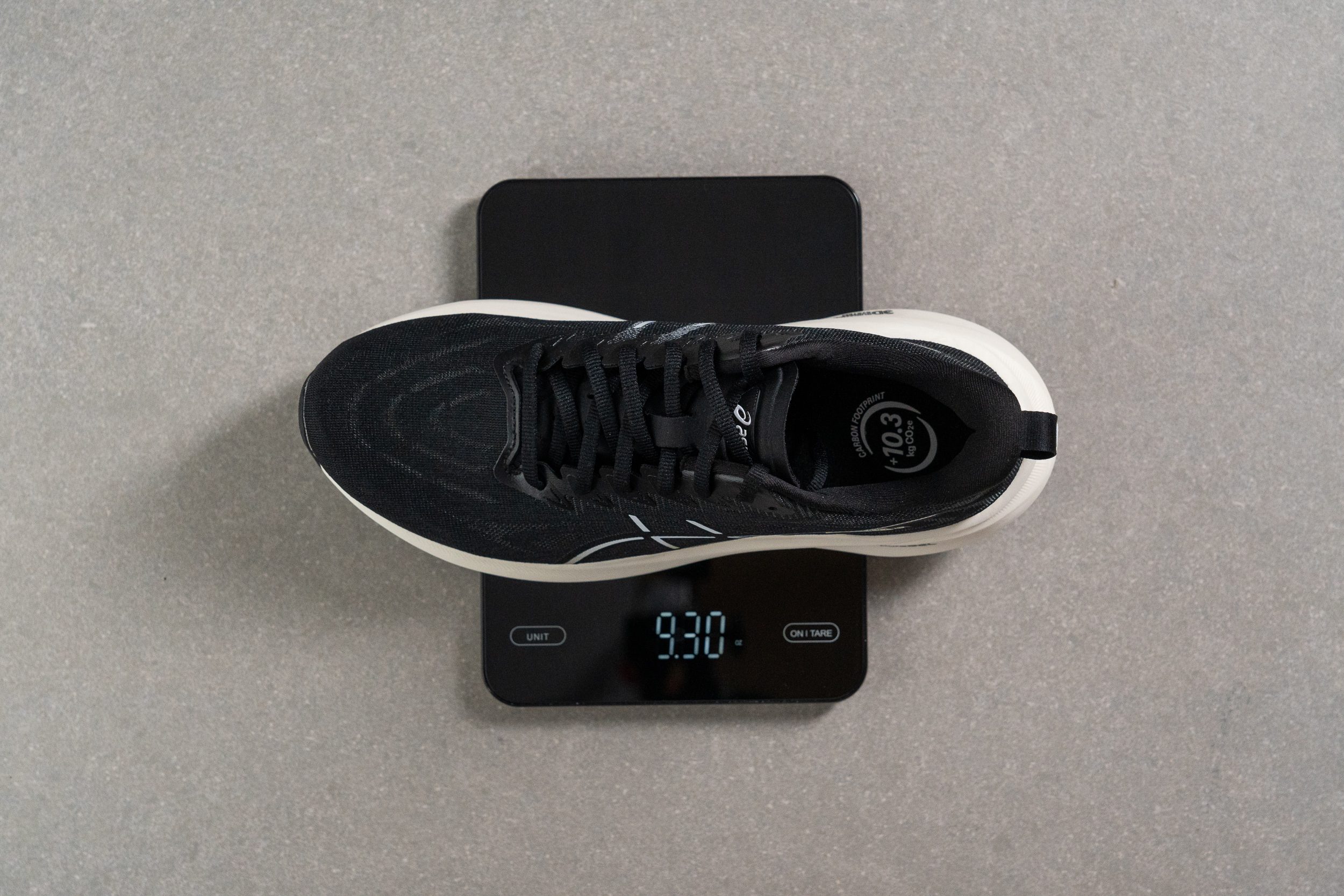
| GT 2000 13 | 9.3 oz (264g) |
| Media | 9.3 oz (264g) |
Transpirabilidad
Las GT 2000 son conocidas por todo el mundo por ser unas zapatillas fiables y consistentes en todas las categorías, así que teníamos muchas ganas de empezar a hacerles pruebas.
Comprobamos su rendimiento utilizando una máquina de humo, y les dimos un 4/5 en transpirabilidad. Esta puntuación es nuestra favorita para las zapatillas de entrenamiento diario, ya que garantiza suficiente ventilación en verano y comodidad en invierno durante todo el año.
Como están diseñadas para ofrecer estabilidad, la verdad es que no nos sorprendió que ASICS redujese el flujo de aire en la parte delantera. La marca ha reforzado bastante los laterales de estas zapatillas en comparación con otros modelos, mejorando así la sujeción lateral y reduciendo las posibilidades de que el pie se salga por los lados.
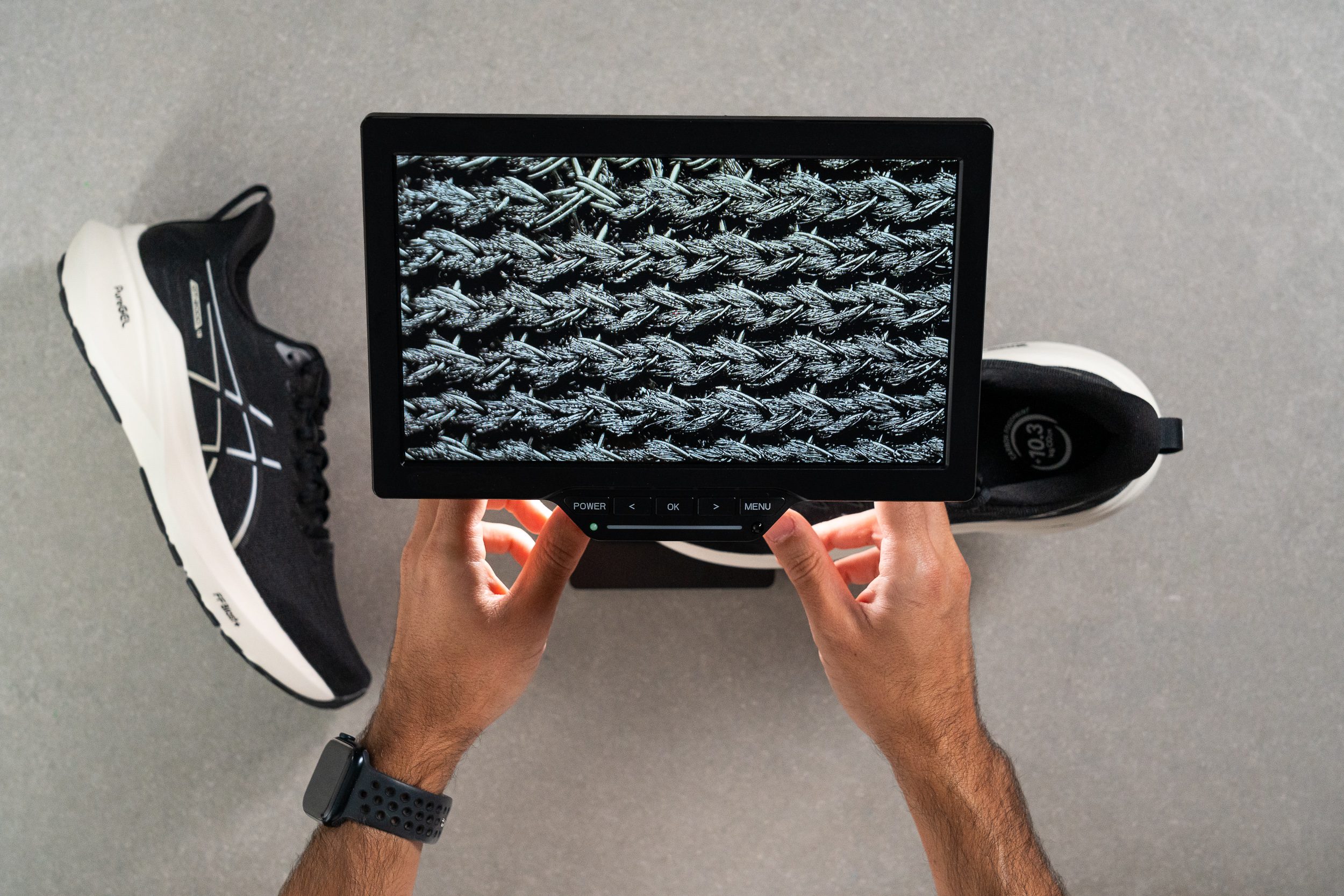
Bajo nuestro microscopio, descubrimos que tienen una malla con un diseño estándar y sin agujeritos grandes por los que dejar que pase el aire. Aunque, si estos fuesen más grandes, la transpirabilidad mejoraría, es muy probable que la durabilidad disminuyese, y este último es un aspecto crucial para los compradores de las GT 2000 que se esperan que tengan una larga vida útil.
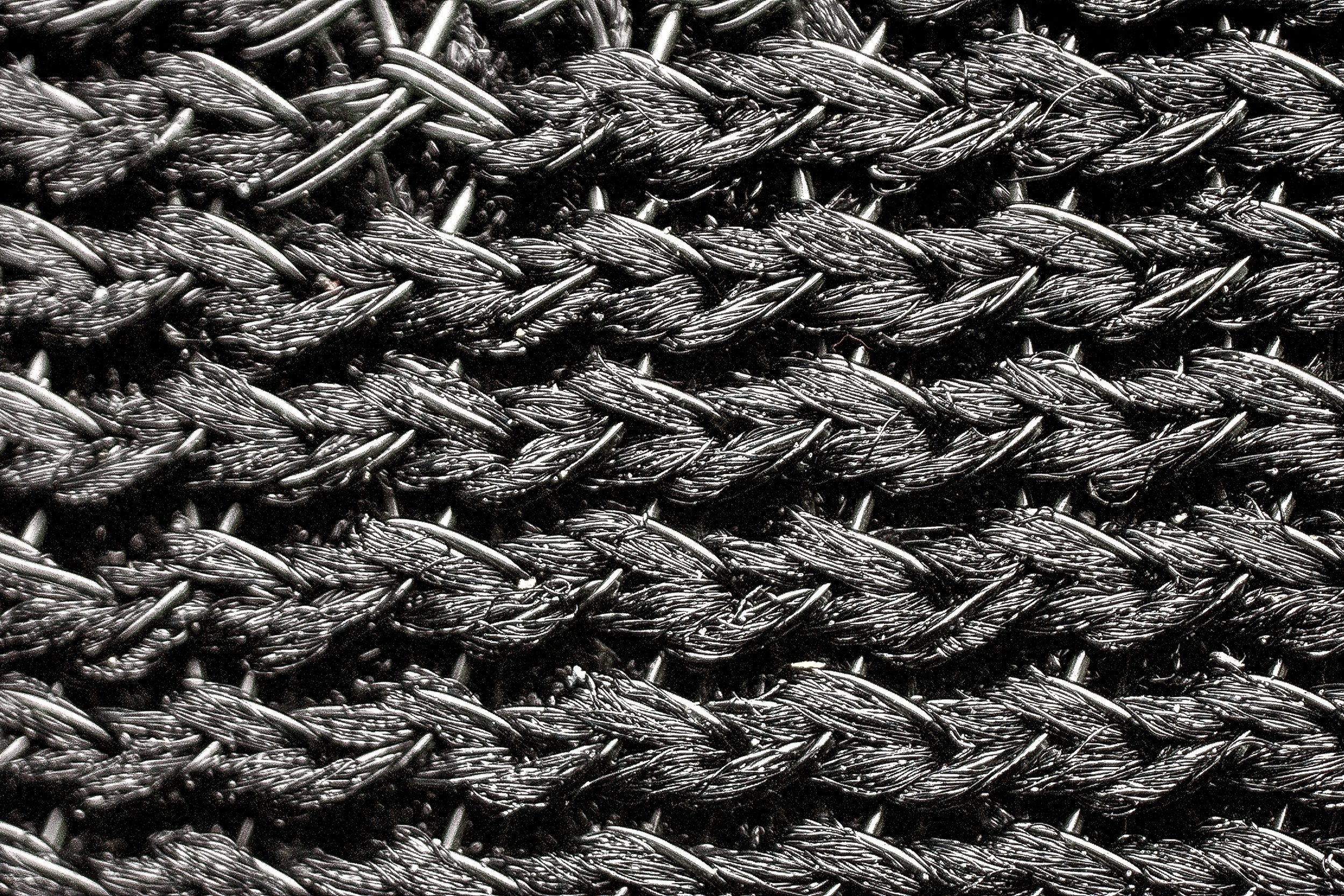
En general, creemos que la parte superior de las GT 2000 13 tiene una calidad y un acolchado adecuados. No hay nada en ella que destaque, pero tampoco tiene problemas importantes, así que básicamente su diseño sigue un enfoque sin riesgos.
| GT 2000 13 | 4 |
| Media | 3.7 |
Estabilidad
Prueba de estabilidad lateral
La saga GT 2000 ha ofrecido de forma constante una estabilidad maravillosa que no abruma a los pies. Vamos, que proporciona un equilibrio perfecto sin que los pies estén constantemente recordándolo.

Esto es gracias al sistema 3D Guidance System de ASICS, que utiliza un talón más ancho y una alta rigidez torsional para que la pisada sea más fluida. De hecho, funcionan exactamente como nos esperamos de unas zapatillas de estabilidad suave.
En nuestras pruebas hemos podido confirmar que, efectivamente, este diseño proporciona una estabilidad mejorada de forma sutil, ideal para los que necesitan un poco de sujeción pero prefieren una sensación natural bajo los pies.
Rigidez torsional
Ya habíamos destacado anteriormente la alta rigidez torsional de las GT 2000, y ASICS ha decidido aumentarla, consiguiendo una puntuación máxima de 5/5 en nuestras pruebas manuales, en comparación con el 4/5 de las GT 2000 12. Este cambio puede pasar desapercibido a menos que estés muy atento, ya que es muy sutil, y nosotros tuvimos que ponernos a retorcer ambas versiones para notarlo.
Sin embargo, es importante entender que las GT 2000 carecen de la flexibilidad típica de unas zapatillas neutras de entrenamiento diario, y mira, por nosotros sin problema. Esta rigidez proporciona una mayor estabilidad, lo que es una gran ventaja para estas zapatillas, pero también puede hacer que se sientan menos naturales al correr.
| GT 2000 13 | 5 |
| Media | 3.5 |
Rigidez del contrafuerte del talón
El contrafuerte del talón de las GT 2000 13 no ha cambiado nada en comparación con el del año pasado. Sigue teniendo una estructura firme que les va bien a los talonadores, y se ha llevado un 4/5 en rigidez.
| GT 2000 13 | 4 |
| Media | 2.9 |
Anchura de la mediasuela - antepié
Hemos observado cambios en las dimensiones de estas zapatillas en comparación con el modelo del año pasado, ya que ahora el antepié es más estrecho, con 115,2 mm, típico de muchas zapatillas de entrenamiento diario, en comparación con los 119,3 mm anteriores. Aunque este ajuste puede no ser el mejor para los corredores de metatarsos que necesitan un extra de estabilidad, sí que hace que estas zapatillas sean más ágiles y ligeras para la mayoría de los usuarios.

| GT 2000 13 | 115.2 mm |
| Media | 114.4 mm |
Anchura de la mediasuela - talón
ASICS ha ensanchado el talón de estas ASICS hasta los 102,2 mm, mejorando la estabilidad para los talonadores, que son el público principal de este modelo.
Este ajuste hace que tengan uno delos talones más anchos entre los modelos de entrenamiento diario de estabilidad moderada que están disponibles hoy en día.

| GT 2000 13 | 102.2 mm |
| Media | 90.7 mm |
Durabilidad
Durabilidad de la parte delantera
Después de ver lo transpirables que son, teníamos muchas ganas de averiguar si la falta de agujeritos para el aire en su material haría que fuesen tan duraderas como nos esperamos de la serie GT 2000.
¡Pues parece que teníamos razón! Nuestro Dremel atacó sin piedad a la malla de estas zapatillas, y cuando analizamos los resultados nos dimos cuenta de que el desgaste es bastante menor de lo habitual, así que decidimos darles un 4/5 en esta prueba.
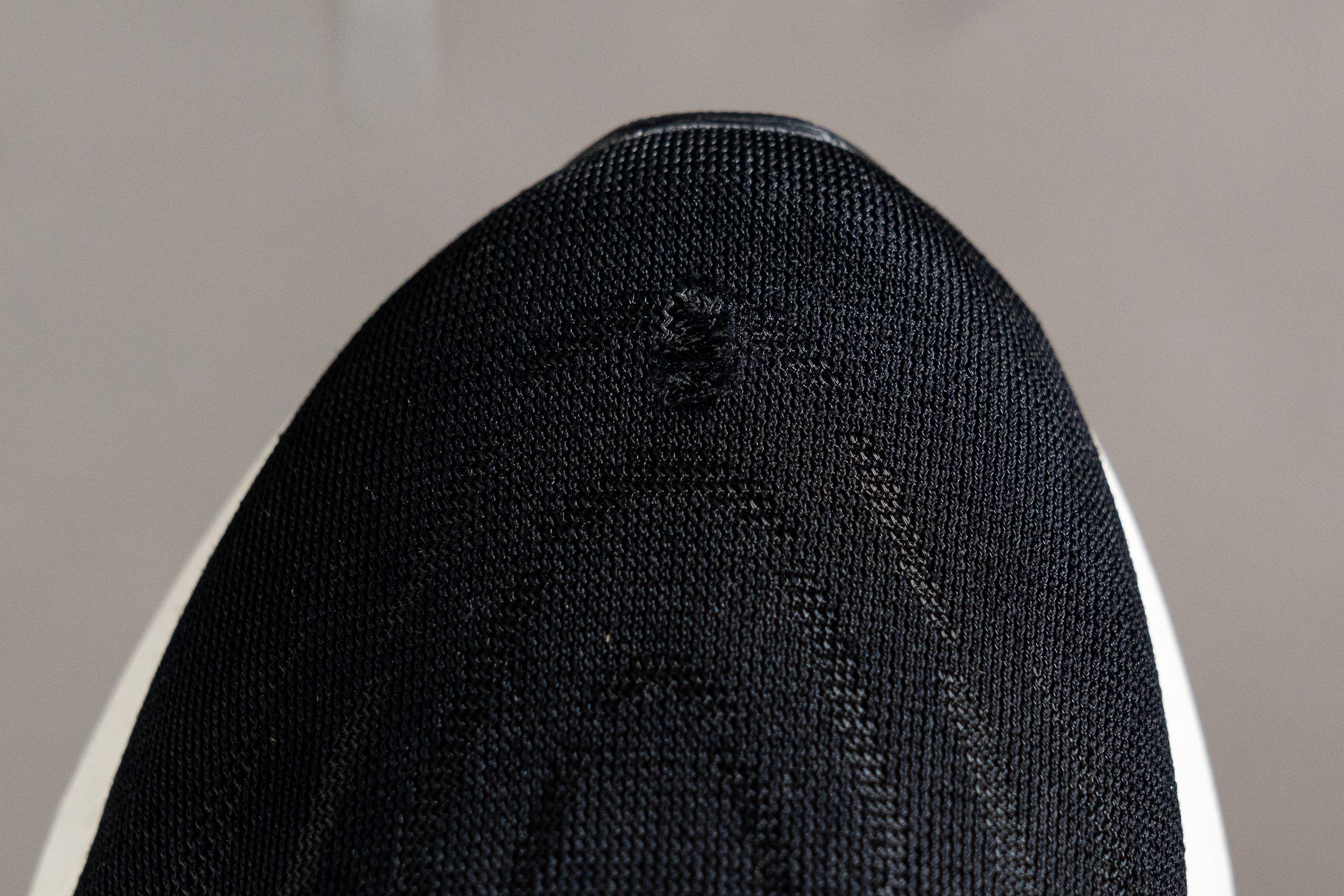
| GT 2000 13 | 4 |
| Media | 2.6 |
Durabilidad del acolchado del talón
Pero, espera, ¡que eso no es todo! Si eres de los que termina con la zona del tendón de Aquiles desgastadísima en sus zapatillas de running, las GT 2000 13 te irán como anillo al dedo. En esta segunda prueba de Dremel, este par se ha llevado un 5/5.
Es un resultado magnífico que le promete una vida útil larguísima a la parte superior de las GT 2000 13.

| GT 2000 13 | 5 |
| Media | 3.4 |
Dureza de la suela
Con respecto a la suela exterior, podemos decir que la marca japonesa decidió seguir una estrategia prudente, retocando un poco el diseño de la V12 al añadir más caucho en las zonas más propensas al desgaste.

Nuestro durómetro marcó 82,1 HC, un resultado cercano a la media. La verdad, es lo que nos esperábamos de unas zapatillas diseñadas siguiendo un enfoque sin riesgos, y además esto sugiere que serán bastante duraderas. De todos modos, seguimos pensando que ASICS podría haber utilizado ASICSGRIP, que es su mejor suela exterior, aunque el caucho AHAR+ tiene un rendimiento lo suficientemente bueno.
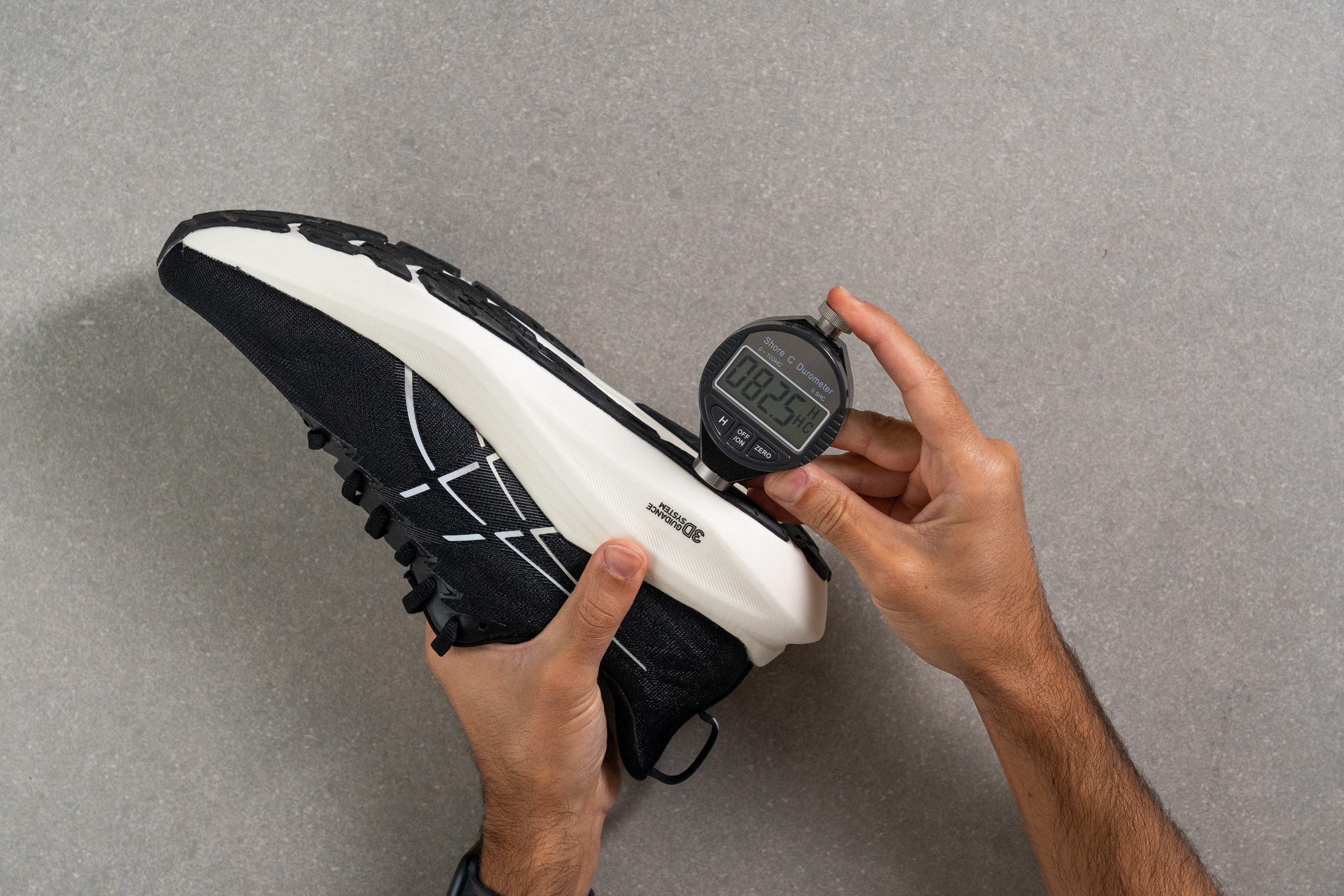
| GT 2000 13 | 82.1 HC |
| Media | 79.2 HC |
Durabilidad de la suela
Parece que las GT 2000 13 están diseñadas para destacar en las pruebas de durabilidad, ya que han triunfado por tercera vez consecutiva en su batalla contra nuestro Dremel.
En esta última prueba, la suela exterior terminó con unos daños de solo 0,4 mm, lo que nos deja claro su fantástica durabilidad.

| GT 2000 13 | 0.4 mm |
| Media | 1.1 mm |
Grosor de la suela
Si todavía estás preocupado por su durabilidad, deja que te digamos que ASICS ha añadido 4,5 mm de caucho debajo de la mediasuela, que es bastante más de lo habitual.
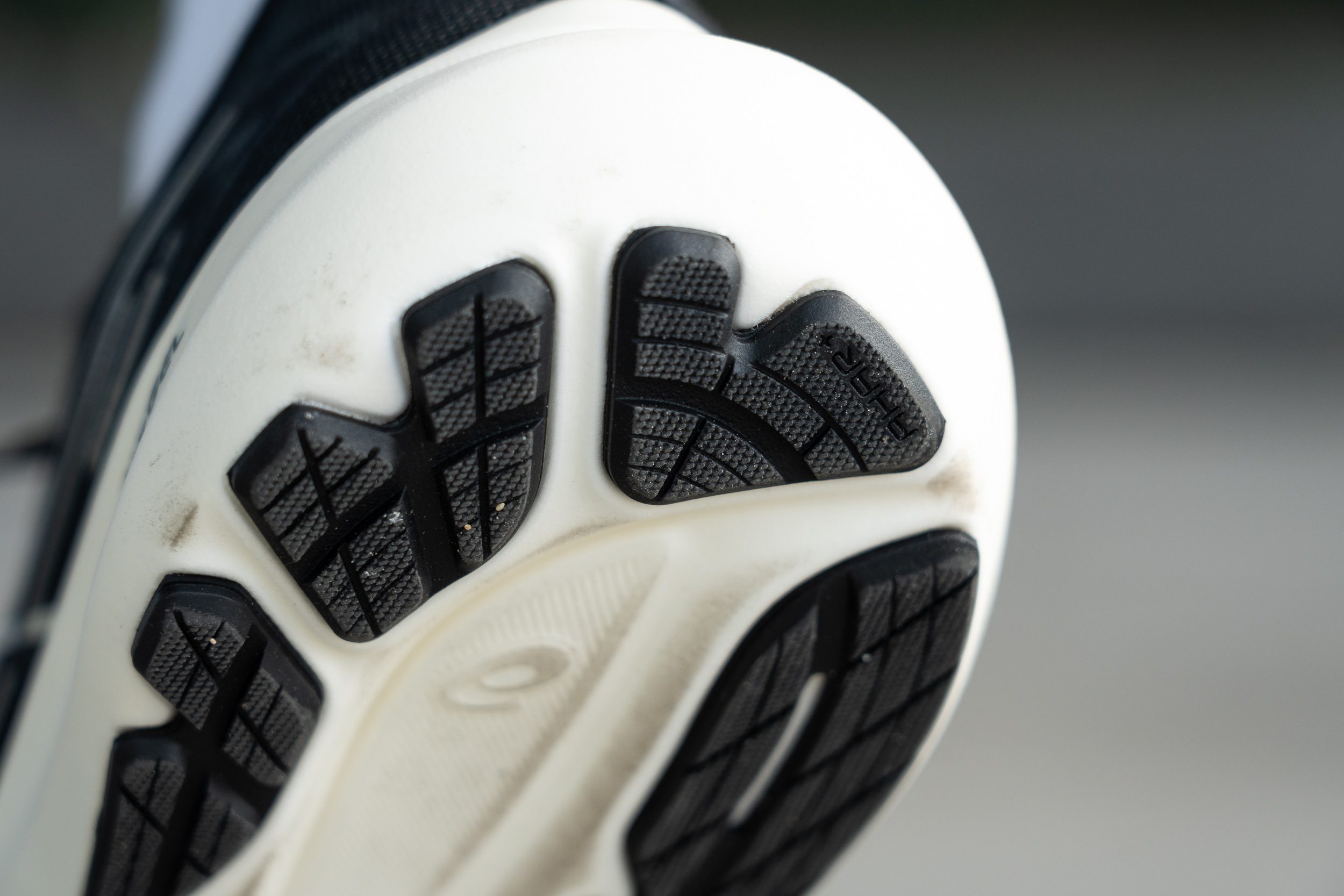
Vamos, que el caucho no es solo duradero, sino que también tiene un grosor considerable, así que sería bastante extraño que la suela exterior se desgastase primero, sea cual sea tu técnica de carrera.
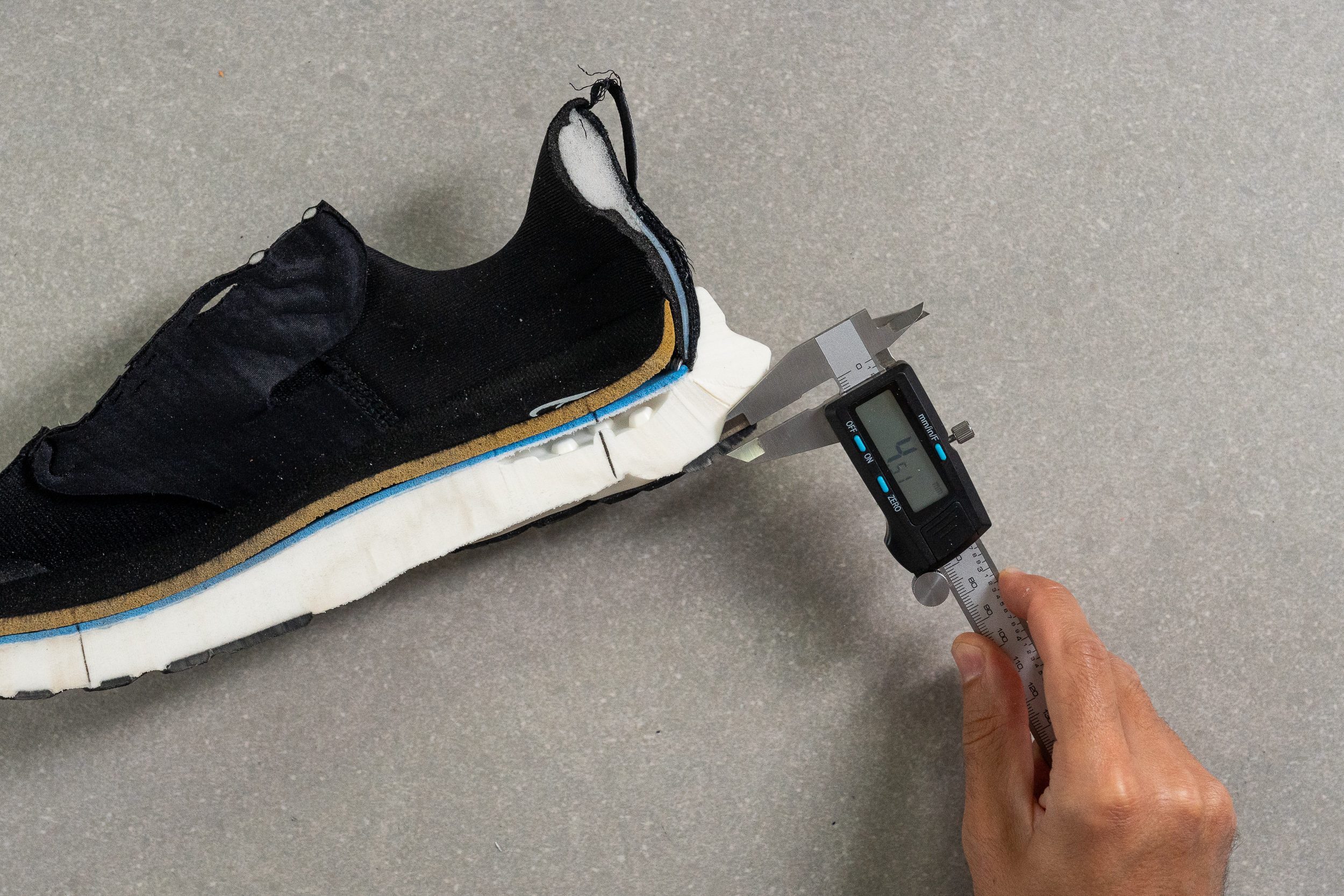
| GT 2000 13 | 4.5 mm |
| Media | 3.2 mm |
Varios
Grosor de la plantilla
Descubrimos que las GT 2000 13 tienen una plantilla de 5,1 mm, que más gruesa de lo habitual.
Es importante destacar que no se trata de una plantilla cualquiera, sino de la Ortholite X-55, un modelo que suele acompañar a otras zapatillas de running de gama alta y que, como su propio nombre indica y la marca afirma, devuelve el 55 % de la energía en cada paso, más que las tradicionales plantillas de EVA.

| GT 2000 13 | 5.1 mm |
| Media | 4.5 mm |
Plantilla extraíble
Pudimos quitarles la plantilla sin problemas ya que, además de indicar la huella de carbono de las zapatillas, tiene una forma bastante estándar, lo que permite sustituirla sin problemas.
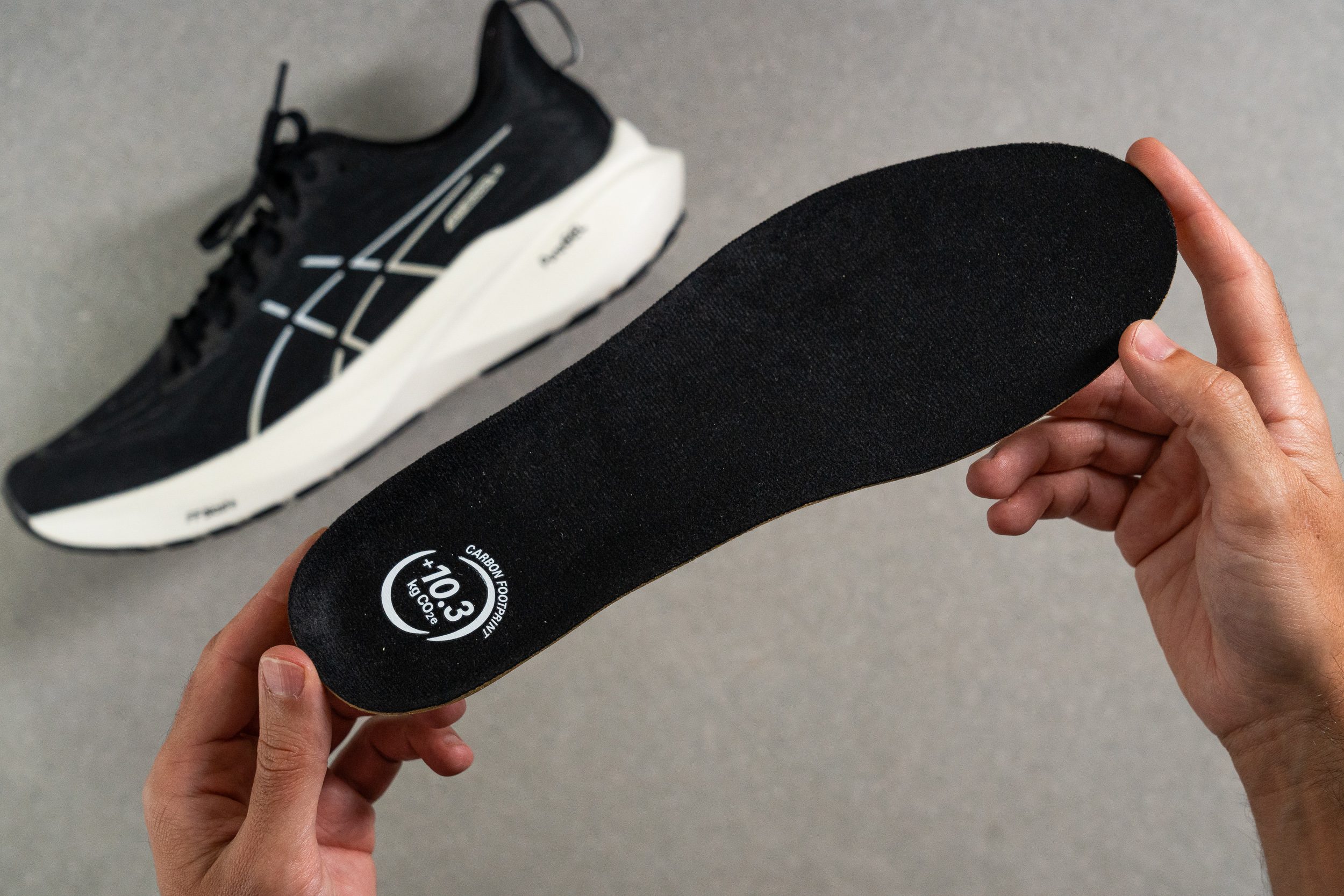
| GT 2000 13 | Sí |
Rigidez de la mediasuela en frío (%)
La FF Blast+ es una mezcla de EVA y copolímeros de bloque de olefina (OBC), que mejora el rendimiento a bajas temperaturas. Mientras que la EVA suele endurecerse bastante con el frío, el OBC mantiene una suavidad más constante.
Durante nuestra prueba de 20 minutos en el congelador, descubrimos un aumento del 24,3 %, ¡un resultado que consideramos bastante positivo!
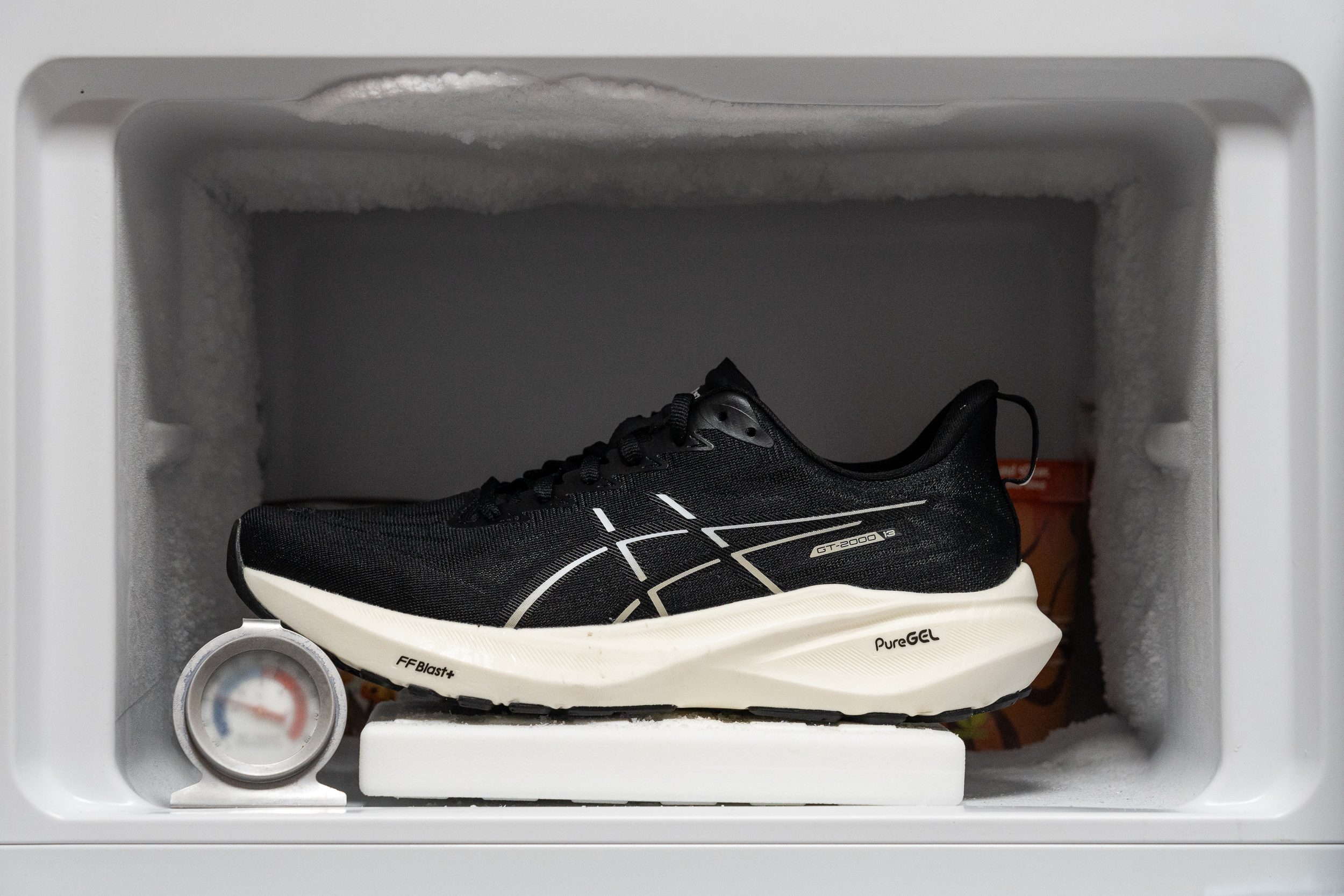
| GT 2000 13 | 24% |
| Media | 24% |
Elementos reflectantes
Las GT 2000 13 demuestran que es fácil para las marcas ponerles elementos reflectantes a sus zapatillas de running con un coste mínimo y sin peso añadido. A nosotros nos llega con que tengan un detallito reflectante en el talón, ya que esto mejora mucho la visibilidad por la noche.
| GT 2000 13 | Sí |
Acolchado de la lengüeta
En las GT 2000 12, la lengüeta de 12,5 mm nos pareció demasiado gruesa e incluso incómoda. Parece que ASICS ha tenido en cuenta nuestros comentarios, ya que ahora ha optado por una lengüeta mucho más fina, de 3,3 mm, incluso más fina del estándar en las zapatillas de entrenamiento.

Aunque una lengüeta de unos 5 o 6 mm de grosor podría ser mejor, definitivamente preferimos esta versión aerodinámica a la del año pasado. También es importante señalar que esto hace que las zapatillas pesen menos.

| GT 2000 13 | 3.3 mm |
| Media | 5.8 mm |
Lengüeta: tipo de refuerzo
Otra característica importante de las GT 2000 13 es su lengüeta reforzada, que mejora el cierre al estar fijada a los laterales. Si tenemos en cuenta el acolchado rediseñado de la lengüeta que descubrimos en estas zapatillas, este refuerzo es un punto clave, haznos caso.

| GT 2000 13 | Ambos lados (semi) |
Precio
Siempre hemos considerado que la serie GT 2000 tiene una buena relación calidad-precio, y estamos encantados de poder decirte que no se han vuelto más caras que el modelo anterior. En el mercado actual, la verdad es que esta decisión de ASICS nos parece fantástica.
| GT 2000 13 | $140 |
Tirador del talón
El talón de las GT 2000 13 es igual que el resto de las zapatillas, funcional pero sin sorpresas. Tienen un tirador estándar en el talón que cumple eficazmente su función y que parece lo suficientemente resistente como para durar toda la vida útil de este modelo.
También nos gustó el pequeño ajuste que ASICS le añadió al cuello del talón, aliviando la presión sobre el tendón de Aquiles, algo parecido a lo que hace Hoka.
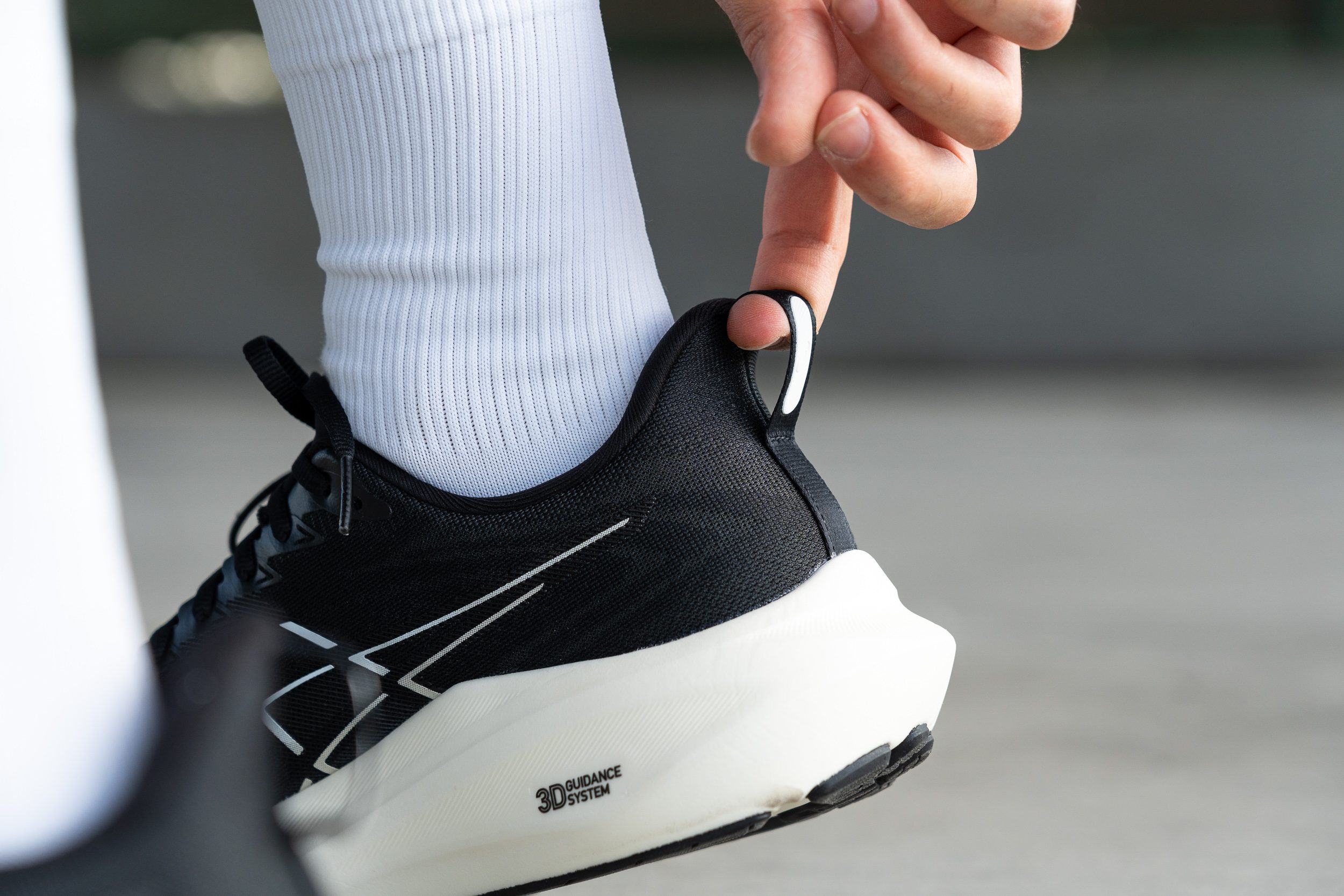
| GT 2000 13 | Tirador circular |

